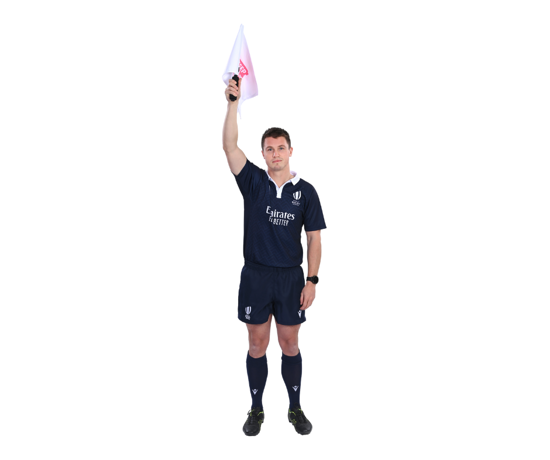In touch
When the ball goes into touch the Assistant Referee should:
- Raise their flag to indicate to players and other officials that the ball is “in touch”

- Determine where the ball crossed the line and indicate the position where the line out is to be formed by placing their foot on the touch-line
- When a quick throw can no longer be taken, indicate which team is to throw the ball into the lineout, by raising their arm on the side of the team to throw in.

A ball is considered “in touch” when it crosses the sidelines and leaves the field of play.
Touch is covered by Law 18. It is crucial that an Assistant Referee understands this law and is able to apply it. The Assistant Referees should be aware of the differences between a quick throw-in (as per Law 18.3-7) and a quickly-taken lineout when the lineout has legally been formed and the ball can be thrown in. In this case, the throwing-in team does not have to wait for everyone to be ready, a different ball may be used and the ball must be thrown in straight.

There are many factors which will influence when a ball is deemed to be "in touch" and where the lineout takes place.
The following simple principles should help the Assistant Referee to make the correct decision:
Watching the ball:
- has the ball made contact with the touchline, touch in-goal or anything beyond?
Watching the touchline and the plane of touch:
- how to ensure best positioning to verify whether the ball is in touch?
- who was the last player to touch the ball before it crossed the plane of touch - i.e., did a player catch the ball before it reached the plane of touch or after?
Watching the players:
- has the ball-carrier made contact with the touchline, touch in goal or anything beyond?
- has a player, who is already making contact with the touchline, touch-in-goal line or anything beyond, caught or is holding the ball?
- if caught by a player who is in the air - where did they start and finish their jump from?